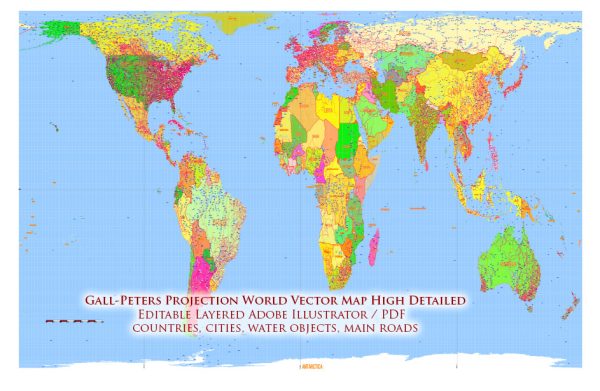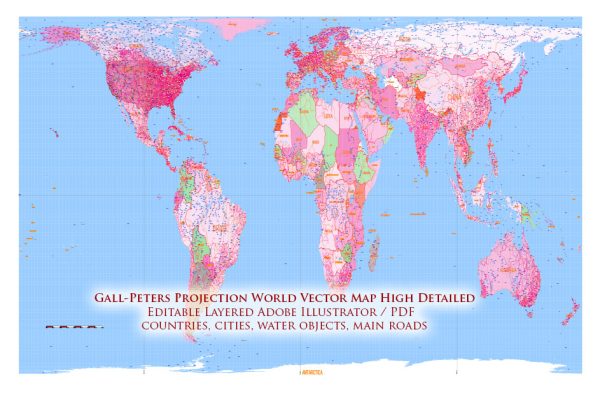The history of air transportation is a fascinating journey that spans centuries and has seen remarkable developments in technology, engineering, and global connectivity.
Vectormap.Net provide you with the most accurate and up-to-date vector maps in Adobe Illustrator, PDF and other formats, designed for editing and printing. Please read the vector map descriptions carefully.
Here’s a detailed overview of key milestones in the history of air transportation:
1. Early Concepts and Attempts (Ancient Times – 19th Century):
- Ancient Legends: Stories and myths from various cultures often include tales of human flight, like the Greek myth of Daedalus and Icarus.
- Leonardo da Vinci: In the 15th century, da Vinci sketched designs for flying machines, though they were never built or tested.
2. Balloons and Dirigibles (Late 18th Century – Early 20th Century):
- Montgolfier Brothers: In 1783, the Montgolfier brothers conducted the first manned hot air balloon flight in France.
- Zeppelins: Count Ferdinand von Zeppelin pioneered rigid airships in the late 19th and early 20th centuries.
3. Wright Brothers and the Birth of Powered Flight (1903):
- Wright Brothers: Orville and Wilbur Wright achieved the first powered, controlled, and sustained airplane flight in Kitty Hawk, North Carolina, on December 17, 1903, with their aircraft, the Wright Flyer.
4. World War I and Aviation Advancements (1914-1918):
- Military Aviation: The war saw significant advancements in aircraft technology and tactics, leading to the development of fighters and bombers.
5. Interwar Period and Commercial Aviation (1919-1939):
- Airmail Services: The 1920s saw the establishment of airmail services, contributing to the growth of commercial aviation.
- Charles Lindbergh: In 1927, Charles Lindbergh made the first solo non-stop transatlantic flight in the Spirit of St. Louis.
6. World War II and Jet Age (1939-1945):
- Jet Engines: The development of jet engines during World War II revolutionized aviation.
- Commercial Jet Travel: The de Havilland Comet became the world’s first commercial jet airliner in 1952.
7. Commercial Aviation Expansion (1950s-1980s):
- Boeing 707: The Boeing 707, introduced in 1958, marked the beginning of widespread commercial jet travel.
- Supersonic Flight: The Concorde, a supersonic passenger airliner, entered service in 1976, but its commercial success was limited.
8. Modern Era and Globalization (1980s-Present):
- Widebody Aircraft: Introduction of larger and more efficient aircraft, such as the Boeing 747 and Airbus A380.
- Low-Cost Carriers: Rise of low-cost carriers in the late 20th century, democratizing air travel.
- Technological Advancements: Continued advancements in aviation technology, including fly-by-wire systems and more fuel-efficient engines.
- Global Connectivity: Air travel becomes an integral part of globalization, connecting people and economies across the globe.
9. Challenges and Future Developments:
- Environmental Concerns: Aviation faces challenges related to environmental impact, prompting research into sustainable aviation fuels and more efficient technologies.
- Supersonic Travel: Ongoing efforts to develop new supersonic and hypersonic aircraft for faster travel.
- Autonomous Flight: Research into autonomous and electric aircraft for the future.
The history of air transportation is a dynamic narrative that reflects human innovation, perseverance, and the desire to overcome the boundaries of space and time. From the early dreams of flight to the sophisticated global network of today, the journey has been truly transformative.



 Author: Kirill Shrayber, Ph.D.
Author: Kirill Shrayber, Ph.D.